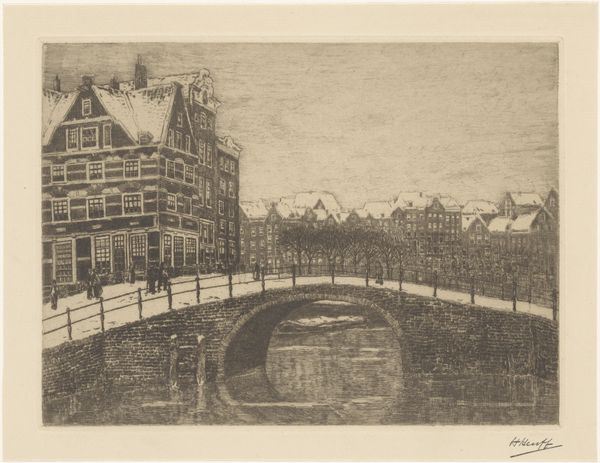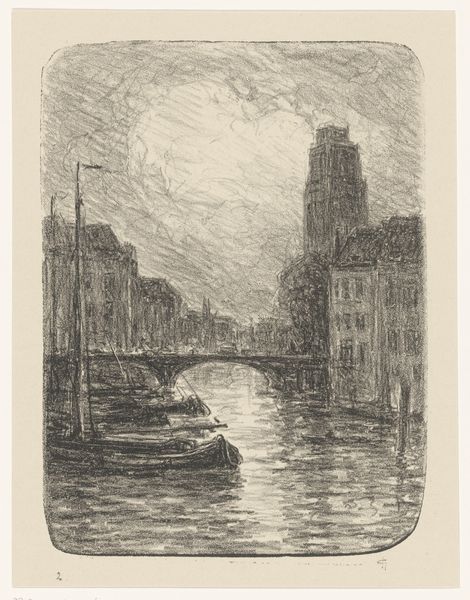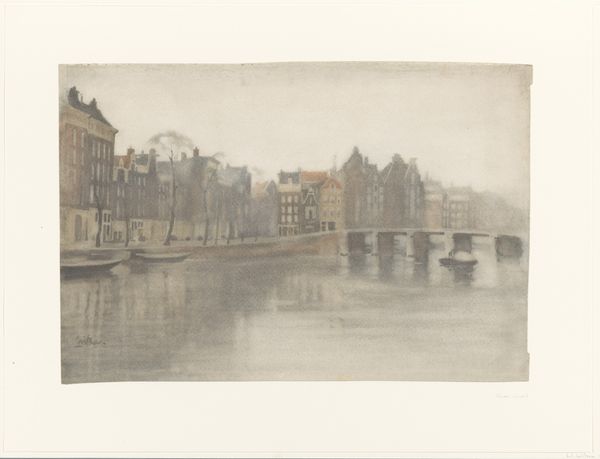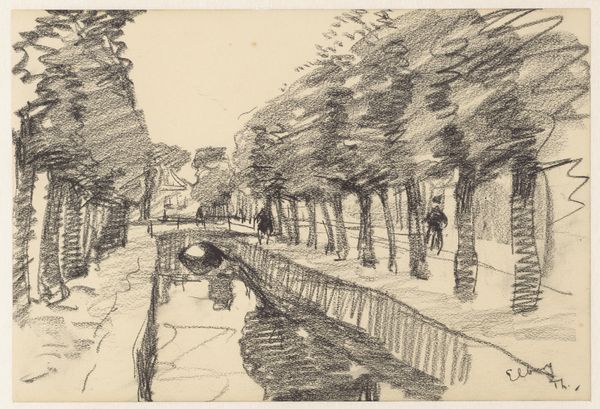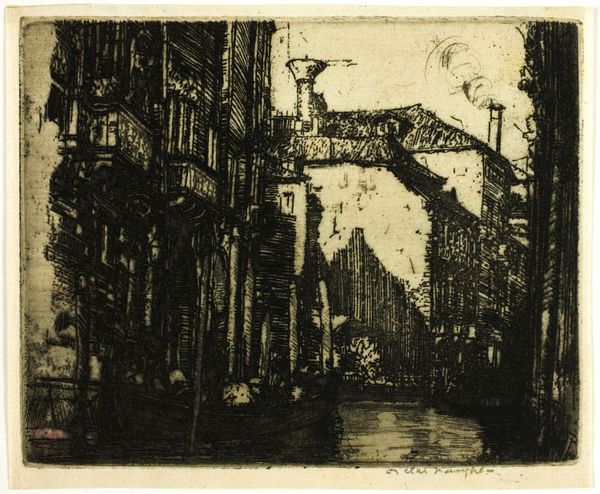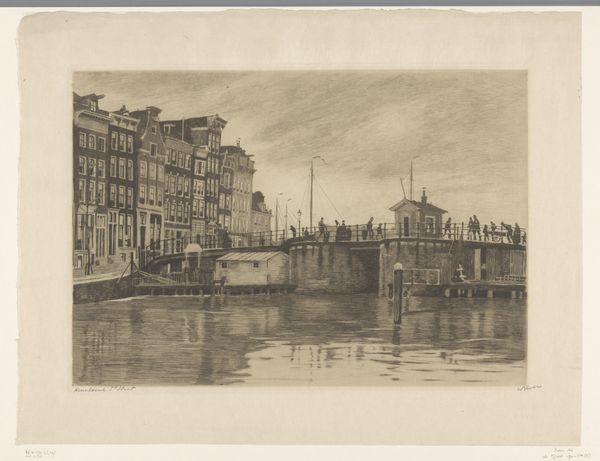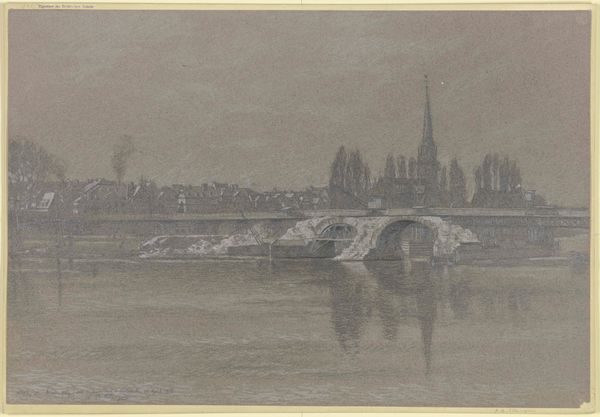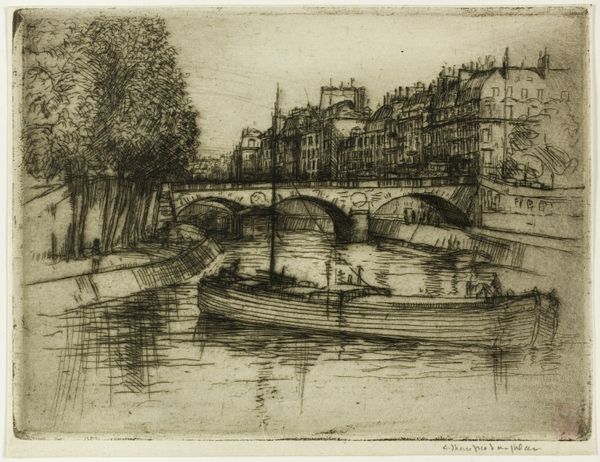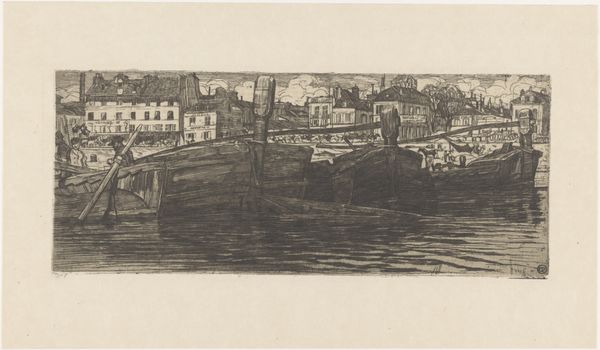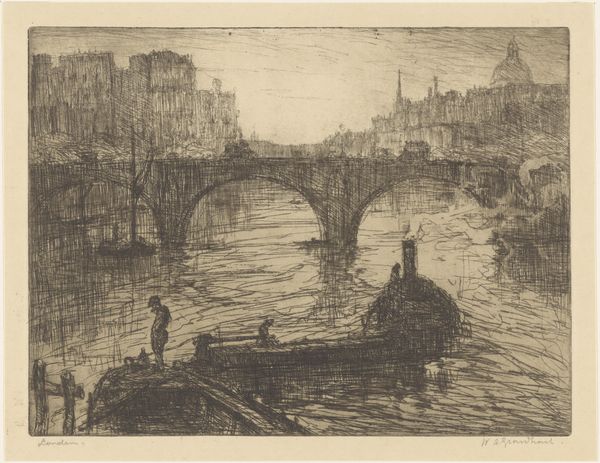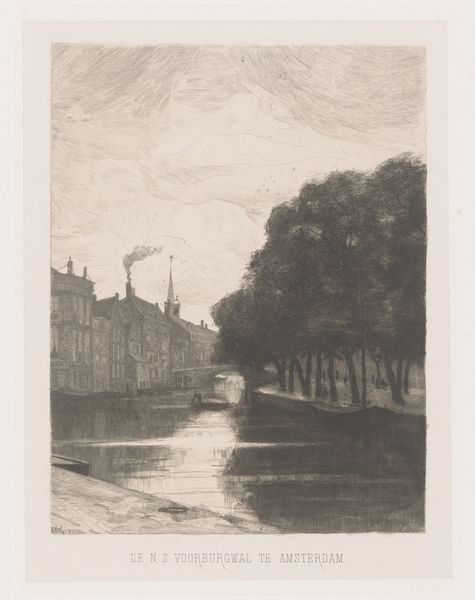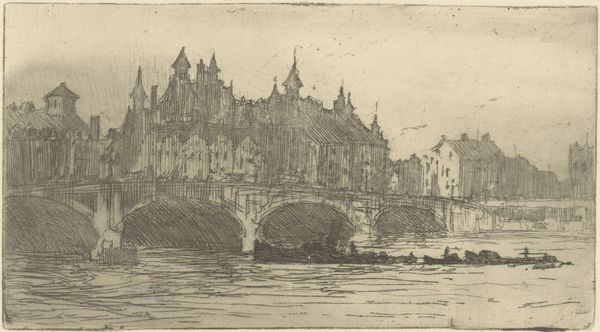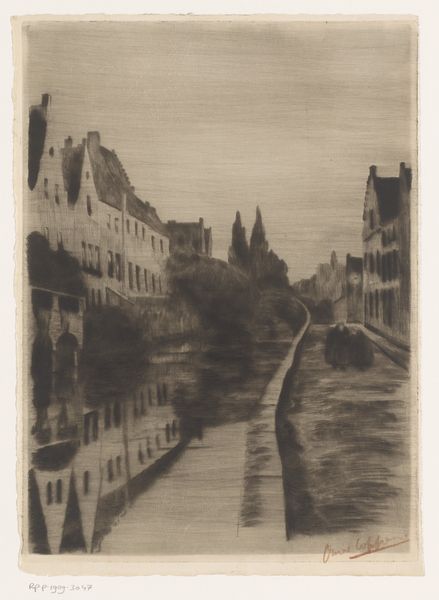
graphic-art, print, woodcut
#
graphic-art
# print
#
landscape
#
coloured pencil
#
woodcut
#
russian-avant-garde
#
cityscape
Copyright: Public domain US
Curator: Anna Ostroumova-Lebedeva’s "Petersburg. Kryukov Canal.", created around 1910, presents a muted view of the city through the lens of the Russian avant-garde. The woodcut medium adds a fascinating layer of texture. Editor: It's immediately striking how the somber palette contributes to a feeling of stillness. The horizontal lines of the canal, bridge, and buildings create a very grounding composition, almost melancholic in its calm. Curator: Indeed. Given the tumultuous political climate of pre-revolutionary Russia, Ostroumova-Lebedeva’s cityscape could be interpreted as more than just a tranquil scene. The Kryukov Canal itself was a vital part of St. Petersburg’s infrastructure, reflecting the empire’s ambitions, yet it is presented here in a rather understated manner. One must wonder, what socioeconomic activities are transpiring here and what is the temperature of class relations in the region during this time. Editor: I see your point about the political undercurrent, but my focus remains on the formal elements. The repetition of rectangular forms – buildings, reflections in the water – provides a very deliberate structure. And then you have the spire which punctures through the horizontal register which offers the eye relief through an alternate implied diagonal movement. It’s the deliberate placement of this shape that provides an anchor point around which the rest of the painting pivots. Curator: Absolutely. The spire does introduce an important vertical counterpoint. The muted color palette and woodcut texture contribute to the image's introspective quality. In the cultural milieu of early 20th century Russia, where artistic expression was often intertwined with social and political commentary, it's vital to decode that intersection, and think about how gender identity and other intersectional forms of oppression may also intersect. Editor: And perhaps its precisely this balance of formal elements that makes it so resonant for future movements as well, regardless of sociopolitical context. Curator: An evocative interpretation through form and social context – the key to true critical reflection. Editor: Exactly, it is like looking into still waters and seeing endless reflections.
Comments
No comments
Be the first to comment and join the conversation on the ultimate creative platform.
